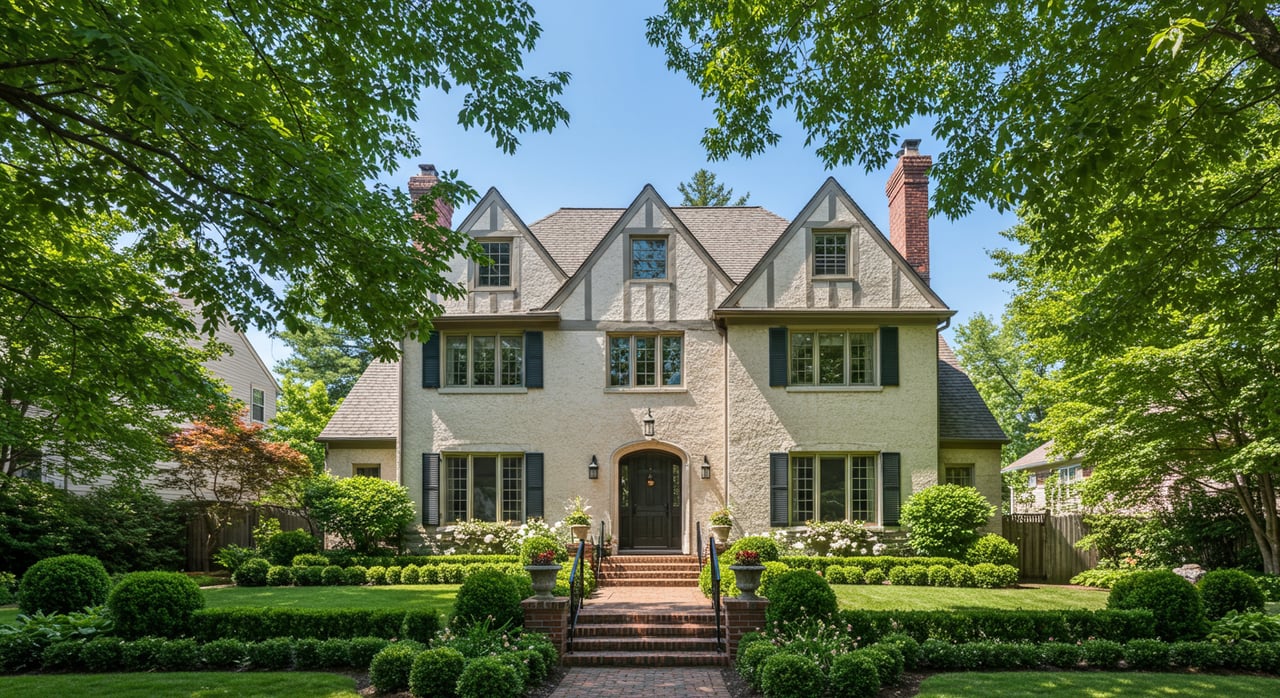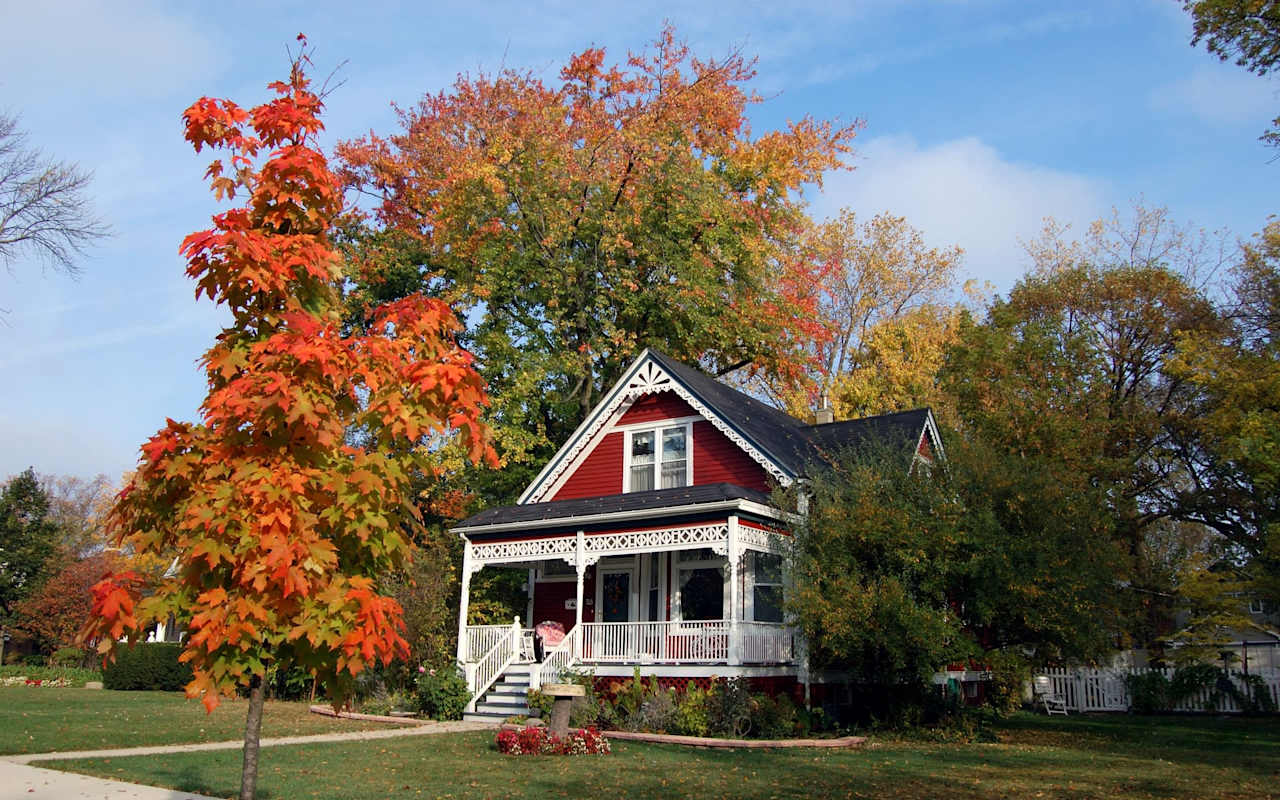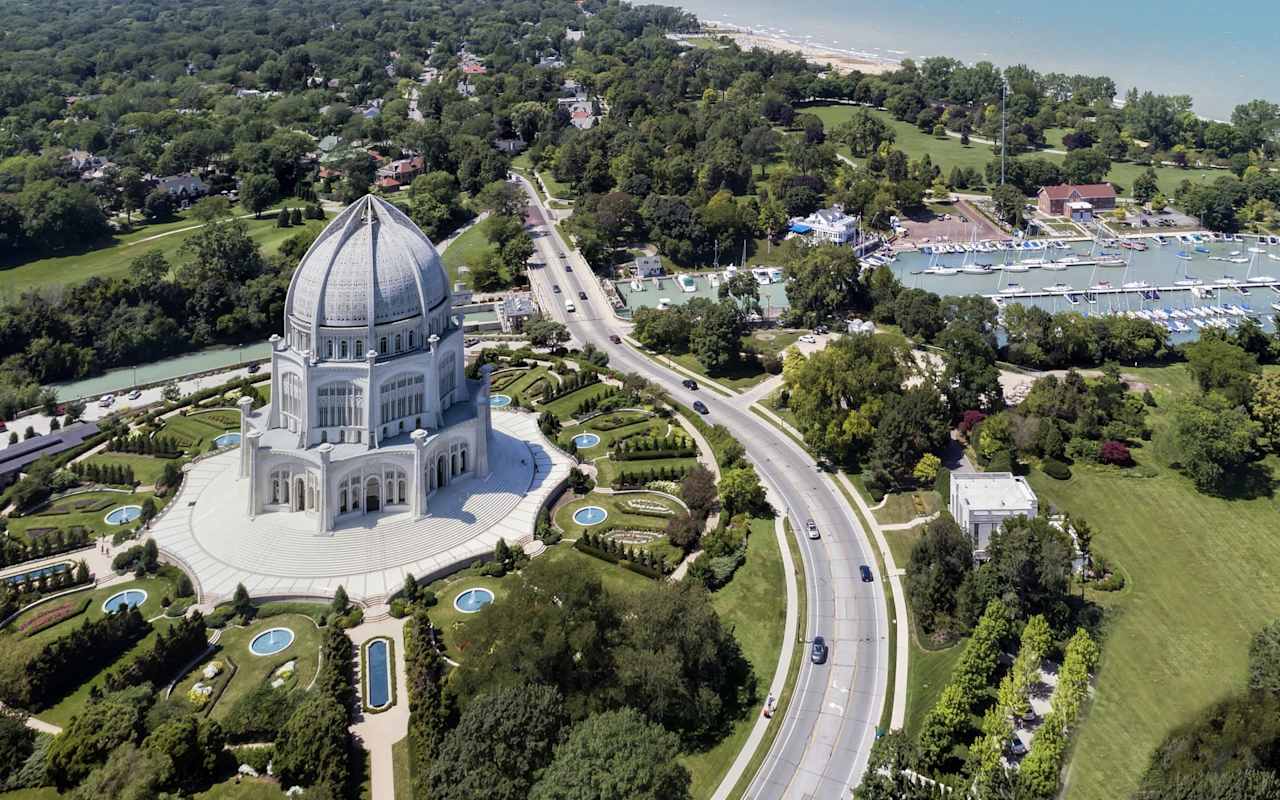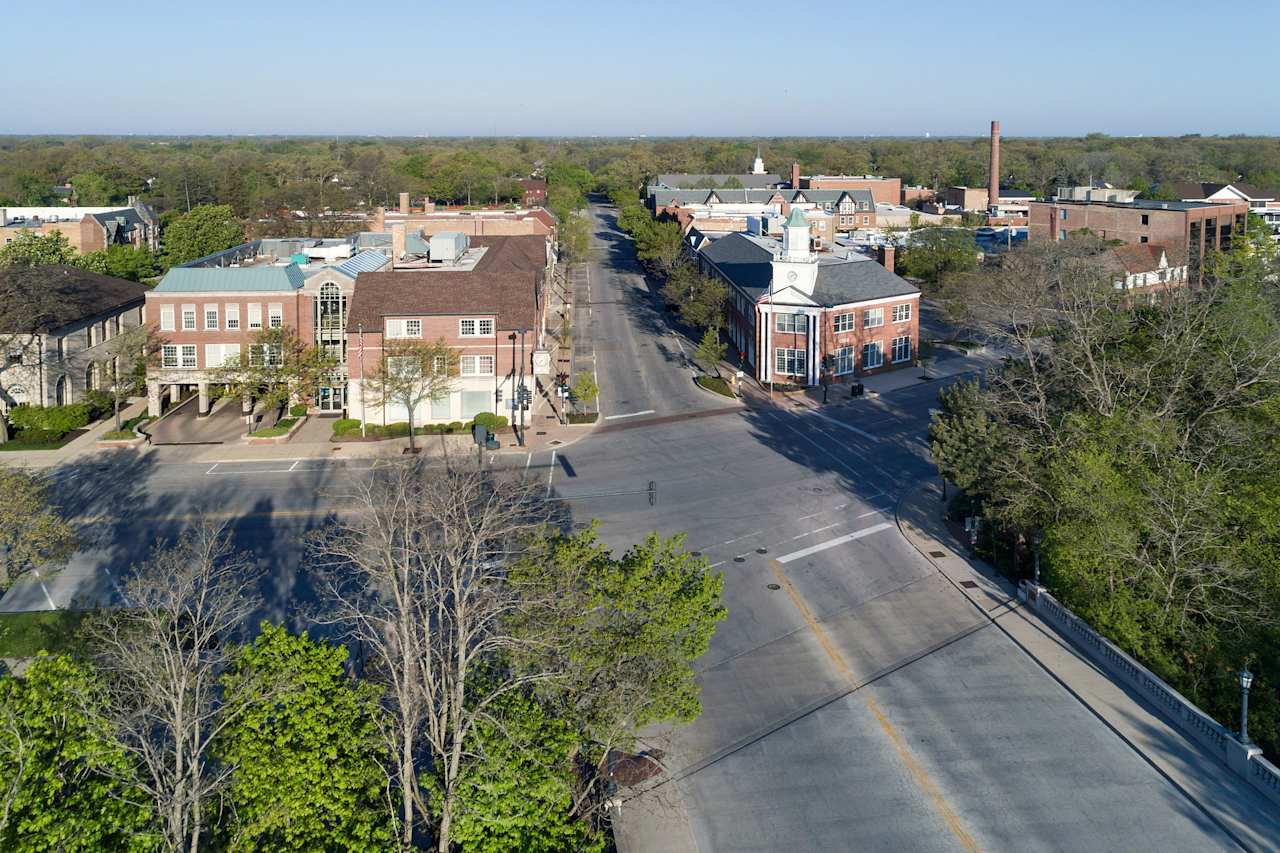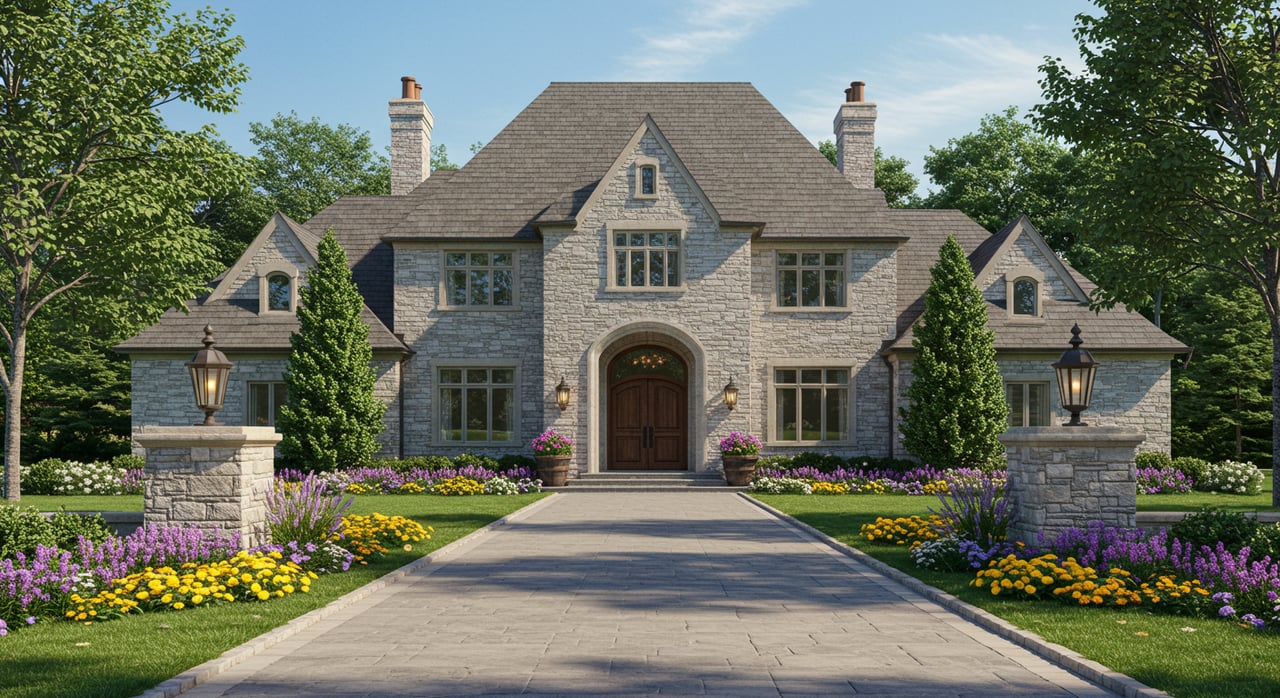Winnetka is a charming village located on the North Shore of Illinois and a short drive from Chicago. The village is known for its beautiful homes, scenic parks, and beaches along Lake Michigan. Residents here often enjoy easy access to the lake, hiking trails, and other outdoor activities. Winnetka architecture includes a mix of styles, with many homes dating back to the late 19th and early 20th centuries.
Whether you're interested in colonial-style homes or Mediterranean masterpieces, Winnetka has a variety of styles to choose from. In this article, realtor Rick Richker highlights the most popular Winnetka, IL, architecture styles and what makes them unique.
Whether you're interested in colonial-style homes or Mediterranean masterpieces, Winnetka has a variety of styles to choose from. In this article, realtor Rick Richker highlights the most popular Winnetka, IL, architecture styles and what makes them unique.
Colonial revival
Colonial Revival homes are characterized by their symmetrical facades, stately columns, and classic details, and they're often found on large, landscaped lots. Many of Winnetka's Colonial Revival homes were built in the late 19th and early 20th centuries.
Colonial homes are typically spacious, with a central entrance and balanced windows and doors. This makes them perfect for families or those who love entertaining, as they offer plenty of room to spread out and enjoy.
A perfect example of Winnetka’s Colonial Revival architecture can be found at 760 Bryant Avenue, a house that dates back to the early 1900s and has since undergone several renovations.
Colonial homes are typically spacious, with a central entrance and balanced windows and doors. This makes them perfect for families or those who love entertaining, as they offer plenty of room to spread out and enjoy.
A perfect example of Winnetka’s Colonial Revival architecture can be found at 760 Bryant Avenue, a house that dates back to the early 1900s and has since undergone several renovations.
Tudor
Tudor-style homes, often made of brick or stucco, are a common sight in Winnetka. The style is known for its steeply pitched roofs, decorative half-timbering, and tall chimneys. Using natural materials like wood and stone, combined with low ceilings and small rooms, creates a snug and inviting atmosphere that is perfect for relaxing and entertaining.
Many Tudor homes were built to withstand the test of time. Using sturdy materials and intricate craftsmanship means that these homes are often still standing well over a century after they were first built.
Want to know what Winnetka’s Tudor Revival-style homes are like? Check out The Felix Lowy House on 140 Sheridan Road, designed by Mayo and Mayo in 1925.
Many Tudor homes were built to withstand the test of time. Using sturdy materials and intricate craftsmanship means that these homes are often still standing well over a century after they were first built.
Want to know what Winnetka’s Tudor Revival-style homes are like? Check out The Felix Lowy House on 140 Sheridan Road, designed by Mayo and Mayo in 1925.
Georgian
Winnetka is known for its beautiful and historic Georgian homes, many built in the early 20th century. These homes are typically two or three stories tall and feature evenly spaced windows and a central door. They often have decorative entrances with features like arched doorways, fanlights, and sidelights.
The interiors of Georgian homes often feature grand entryways, high ceilings, and elegant finishes like crown molding and wainscoting. Georgian homes in Winnetka are highly sought after for their classic beauty and historical significance, and they are a popular choice for those looking for a home that combines traditional style with modern amenities.
You can see Winnetka’s Georgian Revival homes by visiting the Winnetka Village Hall, Everett D. Graff House, and the Kuppenheimer House.
The interiors of Georgian homes often feature grand entryways, high ceilings, and elegant finishes like crown molding and wainscoting. Georgian homes in Winnetka are highly sought after for their classic beauty and historical significance, and they are a popular choice for those looking for a home that combines traditional style with modern amenities.
You can see Winnetka’s Georgian Revival homes by visiting the Winnetka Village Hall, Everett D. Graff House, and the Kuppenheimer House.
Prairie-style
Frank Lloyd Wright popularized the Prairie-style architecture, and many of his disciples built homes in the Chicago area. These homes typically feature low-pitched roofs, wide eaves, and an emphasis on horizontal lines that reflect the surrounding landscape.
Inside, prairie homes often have open floor plans, making them feel much more spacious than other types of homes. Plus, many Prairie-style homes feature large windows and skylights that allow plenty of natural light to flow into the home.
The Ward W. Willits House, built in 1901, is one of Wright’s first Prairie-style designs. This house is also notable for its stained glass windows, which Wright designed to create beautiful patterns of light and color throughout the interior.
Inside, prairie homes often have open floor plans, making them feel much more spacious than other types of homes. Plus, many Prairie-style homes feature large windows and skylights that allow plenty of natural light to flow into the home.
The Ward W. Willits House, built in 1901, is one of Wright’s first Prairie-style designs. This house is also notable for its stained glass windows, which Wright designed to create beautiful patterns of light and color throughout the interior.
Mediterranean
Stucco walls, red tile roofs, and decorative wrought-iron details characterize the Mediterranean style. Many of Winnetka's Mediterranean-style homes were built in the 1920s and 1930s. With its warm colors, textured walls, and inviting archways, a Mediterranean-style home exudes inside and out beauty.
The Mediterranean-style home is designed to maximize natural sunlight and airflow, which helps to keep your home cool and comfortable in hot weather. Many Mediterranean-style homes include outdoor living spaces, such as patios, terraces, and gardens, which allow you to enjoy your home's natural surroundings.
The Mediterranean-style home is designed to maximize natural sunlight and airflow, which helps to keep your home cool and comfortable in hot weather. Many Mediterranean-style homes include outdoor living spaces, such as patios, terraces, and gardens, which allow you to enjoy your home's natural surroundings.
Gothic revival
Gothic Revival architecture was popular in the mid-19th century, and Winnetka is home to several stunning examples of this style, including the famous Henry Demarest Lloyd House.
Many Gothic homes are large, with high ceilings and spacious rooms. This can make for a grand and impressive living space, perfect for homeowners who entertain guests or just prefer peace and quiet. With their large windows and often open floor plans, Gothic homes can be filled with natural light, creating a warm and welcoming atmosphere.
You can find an example of Gothic architecture at 411 Linden Street. This house was built in 1859 and was a residential home until 2001. The Winnetka Historical Society purchased it and turned it into its headquarters and museum.
Many Gothic homes are large, with high ceilings and spacious rooms. This can make for a grand and impressive living space, perfect for homeowners who entertain guests or just prefer peace and quiet. With their large windows and often open floor plans, Gothic homes can be filled with natural light, creating a warm and welcoming atmosphere.
You can find an example of Gothic architecture at 411 Linden Street. This house was built in 1859 and was a residential home until 2001. The Winnetka Historical Society purchased it and turned it into its headquarters and museum.
French revival
French Revival architecture, popular in the early 20th century, can also be seen throughout Winnetka. The stunning French Revival-inspired homes in Winnetka feature symmetrical facades and steeply pitched roofs and often incorporate classical design elements.
French revival-style homes are often spacious, with tall ceilings and large rooms. One of the defining features of French revival-style homes is the abundance of natural light they let in. This makes them ideal for people who value natural light and want a bright, airy living space.
Want to see what French Revival architecture looks like? Take a look at 11 Indian Hill Road, designed by Walter Burley Griffin and built in 1926.
French revival-style homes are often spacious, with tall ceilings and large rooms. One of the defining features of French revival-style homes is the abundance of natural light they let in. This makes them ideal for people who value natural light and want a bright, airy living space.
Want to see what French Revival architecture looks like? Take a look at 11 Indian Hill Road, designed by Walter Burley Griffin and built in 1926.
Find the style that meets your lifestyle and interests
With so many architectural styles, you may need to shop around to find the perfect house. Chicago-area realtor Rick Richker can help you explore Winnetka homes for sale and find the right style for you. To get started, contact Rick and set up a consultation. He would gladly answer your questions and get more insight into your architectural preferences.
*Header photo courtesy of Shutterstock
*Header photo courtesy of Shutterstock
